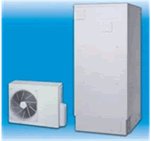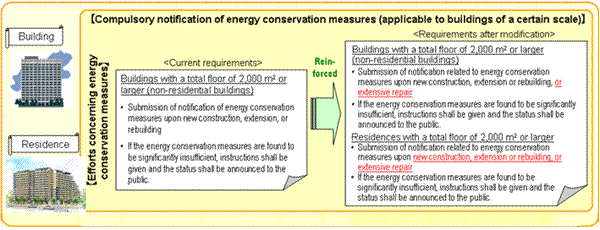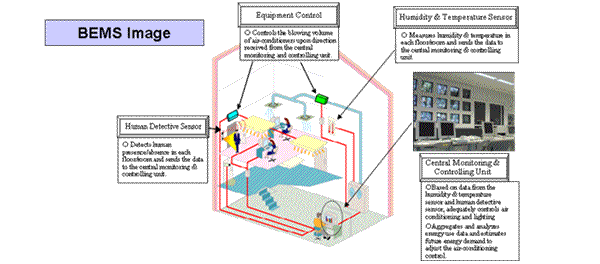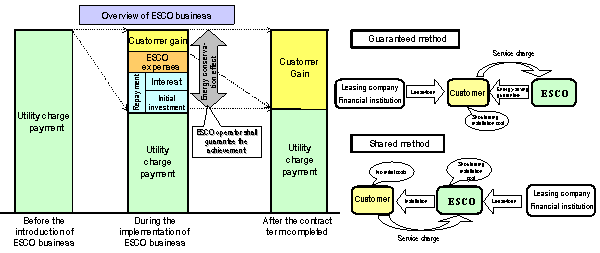Promotion of High-Efficiency Boilers
- Energy demand for hot-water supply dominates approximately 30% of total energy consumption in a household.
- A subsidy system has been introduced to promote the proliferation of energy efficient hot-water systems.
| CO2 Refrigerant Heat-Pump Boiler (ECO CUTE) | Latent-heat Recovery Boiler (ECO JOZU) | Gas Engine Boiler (ECO WILL) |
| Utilizing the principle of a heat-pump used in an air-conditioner, it can be heated with energy of approximately 3 times more than input energy. Energy saving of approximately 30% compared to a traditional combustion-type boiler is achieved. |
Recovers the latent heat of exhausted gas, which is usually wasted. Energy saving of approximately 15% compared to a conventional combustion-type boiler is realized. |
Uses the gas-powered engine's exhaust heat and power to provide heat (main) and electricity (sub) for approximately 10% of overall energy saving for a building. |
 |
 |
 |


